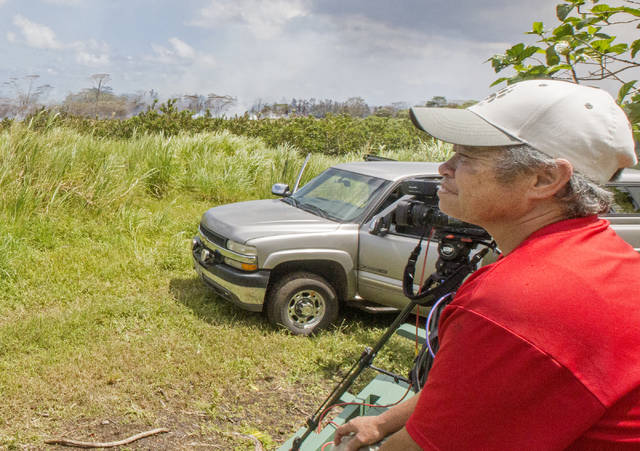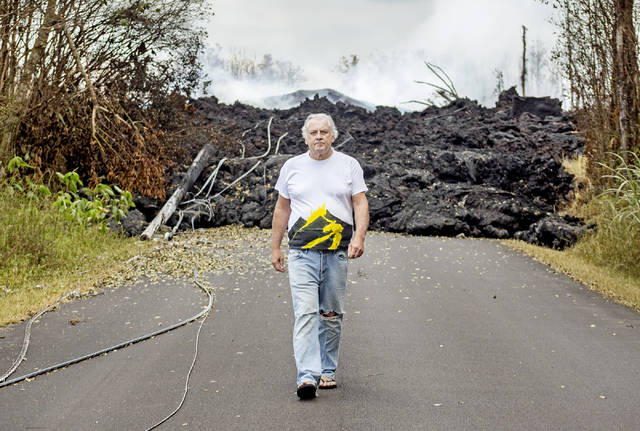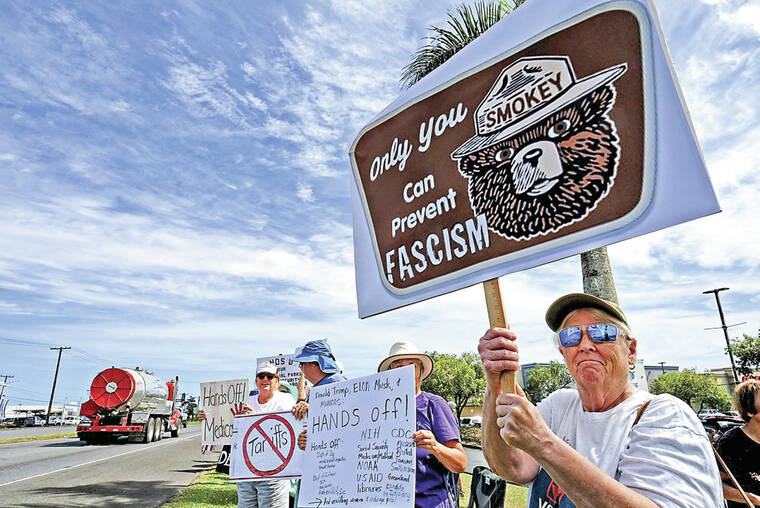Even though 22 fissures and counting have opened in and around Leilani Estates, filling the subdivision with lava and toxic gases, some residents are refusing to leave until the bitter end.
Hawaii County Civil Defense Administrator Talmadge Magno reported approximately 20 residences remain occupied in Leilani Estates as of Thursday evening.
John Artymovich, one of those residents staying behind, said he would leave if he thought his life and health were threatened. So far, he thinks neither of those things have happened.
“We’re here just because it’s our property, man,” said Artymovich, a 60-year-old retiree.
Artymovich’s home is on Luana Street, just north of the largest lava flow in the subdivision. However, he said, his home has not been damaged by lava, and has been upwind of the dangerous volcanic fumes most days since the eruption began.
Artymovich also said he has a month of food, 40 gallons of drinking water, gasoline and a “state of the art” respirator mask.
Debbie Kalaluhi, whose home is directly adjacent to Puna Geothermal Venture property, said her home’s location has spared it the worst of the volcano’s effects. The hill on which her house is built not only forced the lava from nearby fissure No. 17 to flow away from the house, but also shielded the home from the worst of the vog.
However, Kalaluhi said, winds from the south forced her to leave the subdivision for the first time Thursday night, although she returned Friday.
“This is my house,” Kalaluhi, 60, said. “I’ve always felt a connection to the land.”
The land, however, is not what it used to be.
Great swaths of trees have been buried by the lava, and the fissures have raised “platforms” of cooled lava that stretch for acres, Kalaluhi said.
“It’s like living in a war zone,” she said. “The only thing comforting about this war zone is that I know there’s no actual bombs falling.”
That knowledge hasn’t helped her sleep. Repeated blasts from the fissures constantly reverberate through her house, and while they seem to come less frequently during the night, Kalaluhi said she can only get three or four straight hours of sleep each night.
Despite the circumstances, the holdouts have tried to maintain some semblance of normalcy in their daily lives.
Artymovich, who has lived in Leilani Estates for 15 years, said he stayed behind partly to keep an eye on the subdivision and make sure no looters attempt to break into the many abandoned residences. He keeps contact with about 10 other residents who have stayed in the area to monitor suspicious vehicles and individuals, and photographs or interviews strangers he meets.
“The cops have been doing a good job of keeping people out,” Artymovich said.
Kalaluhi, meanwhile, said she tries to keep her avocado farm running as best she can. The crop is still young, she said, and so far has seen no ill effects from the conditions.
“I’m praying and hoping that when the wind changes, the air isn’t as bad,” Kalaluhi said. Sulfur dioxide is harmful to plants and can interfere with their ability to photosynthesize.
“It’s disconcerting,” Kalaluhi said. “You don’t know what future you have.”
Kalaluhi said she does not think Pele will harm her, but will leave if circumstances demand it. She and Artymovich said they will take each day as they come.
In the meantime, Artymovich said, his friend’s house has a bar, a television and horseshoes.
“We’re just living our normal lives, man,” Artymovich said.
Email Michael Brestovansky at mbrestovansky@hawaiitribune-herald.com.









